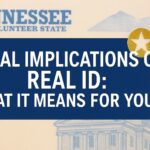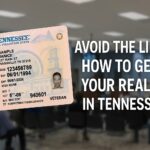Let’s Get a Jump on it Now!
Yes, it’s only April, but the weather in Nashville has been heating up and so has storm activity. At Stillman and Friedland, we know that warm weather is a tempting invitation for hit the road on your motorcycle. On the other hand, strong gusts and sporadic storms create dangers on the road for motorcyclists. How can Tennessee motorcyclists ride more safely? And how can drivers avoid collisions with motorcyclists?
According to the Insurance Information Institute (the III):
In 2016, 5,286 people died in motorcycle crashes, up 5.1 percent from 5,029 in 2015, according to the National Highway Traffic Safety Administration (NHTSA). Motorcycle fatalities have increased for the second year in a row and are at the highest level since 2008, when 5,312 people died in motorcycle crashes. In 2016, motorcyclists were 28 times more likely than passenger car occupants to die in a crash per vehicle mile traveled.
As we discussed in our previous post, accident fatalities have continued to climb and motorcycle accidents are no exception. Since a major spike in 2005, motorcycle accidents in Tennessee have barely dipped below 120 deaths per year. While 2017 was a better year than 2016, with 134 fatalities versus 147, we can still do better. Motorcycle accidents are just more fatal than car crashes. So let’s have a look at the top issues for motorcycle accident prevention.
The National Highway Traffic Safety Administration (NHTSA) reminds drivers to be alert when sharing the road with motorcyclists. This is key because motorists are at fault for more than half of motorcycle accidents. Stillman and Friedland want everyone to look at both sides of this issue.
- Drive safely and defensively! In most cases cars are at fault, so always stay alert to automotive traffic.
- If you spot a driver moving erratically, stay clear.
- Never count on distracted drivers to snap into focus when you are passing or turning.
- Pay attention to the road!
- Be aware that motorcycles are less visible.
- Know where your blind spots are; check before turning.
- NHTSA research shows that passenger vehicle drivers are distracted 50% of the time.
- If you are daydreaming or texting, you can have an accident before you even see it coming.
According to the NHTSA:
Improper use of a vehicle’s rear-view and side-view mirrors contributes to collisions, particularly with smaller vehicles like motorcycles. With roughly 40 percent of a vehicle’s outer perimeter zones hidden by blind spots, improper adjustment, or lack of use of one’s side-view mirrors can have dire consequences for motorcyclists.
Use your rear and side mirrors and constantly check the road. In addition, you may want to add mirror coverage. A panoramic rear-view mirror will set you back around $15.00 and reduce your blind spots. Most install very easily and feature day/night adjustment.
In these wetter months of changing weather roads can be slippery and rain and mist can obscure your view of the road. Take it slowly and be mindful, not distracted. If you are in a situation where visibility is poor, either due to weather or heavy traffic, be cautious at intersections and slow down.
Even when the weather is better, riding above the average speed of the cars on the road with you can be dangerous. Match your pace to the prevailing traffic to avoid accidents.
Both motorcyclists and drivers take note: Motorcycles are allowed a full lane width of space. Doubling up side-by-side in a lane is risky. Less space means less room to maneuver for motorcycles and reduces their visibility. Having their own lane, signaling, and moving at the same speed as car traffic makes motorcyclists more visible and predictable.
Drivers need to increase “follow distance” by about 3-4 seconds when driving behind a motorcycle, according to the NHTSA. Rear-ending a car can cause a bad accident but hitting a motorcycle can simply be fatal. Give motorcycles space and distance.
NHTSA estimates that helmets saved the lives of 1,859 motorcyclists in 2016. An additional 802 lives could have been saved if all motorcyclists had worn their helmets.
Riders should be fully outfitted for safety. A helmet is an absolute must, and if you have had a fall and banged the helmet, it is time for a new one. Select a helmet that is approved by the Department of Transportation (DOT) and that fits well. Body-covering reflective gear adds to your visibility. If you ride on rough or crowded roads, you may want to opt for lightweight body armor. Before you select body armor, do your research and choose the safest and most comfortable options. Some inflexible armor has been linked to injuries, and if you are not comfortable it will stay on a shelf or in a drawer. Remember that body armor is a back-up plan, not the main plan, which is to ride safely. Never opt to ride in a risky manner, counting on the body armor to over you.
Lastly—and we hope this is obvious—drive sober! Motorcyclists have the highest rate of intoxication compared with all other vehicles. Over a third of fatal single motorcycle crashes overall involved drunk riders, and that number was over 50% on weekends. Controlling a motorcycle requires skill and precision reactions. Yes, biker bars are “a thing”, but friends do not let friends drive drunk, whether in a car or, especially, on a motorcycle.
Listen to MC rider on drinking and riding:
We all share our Tennessee roads. Whether you ride or drive, travel safely and arrive alive.
Because we care…






